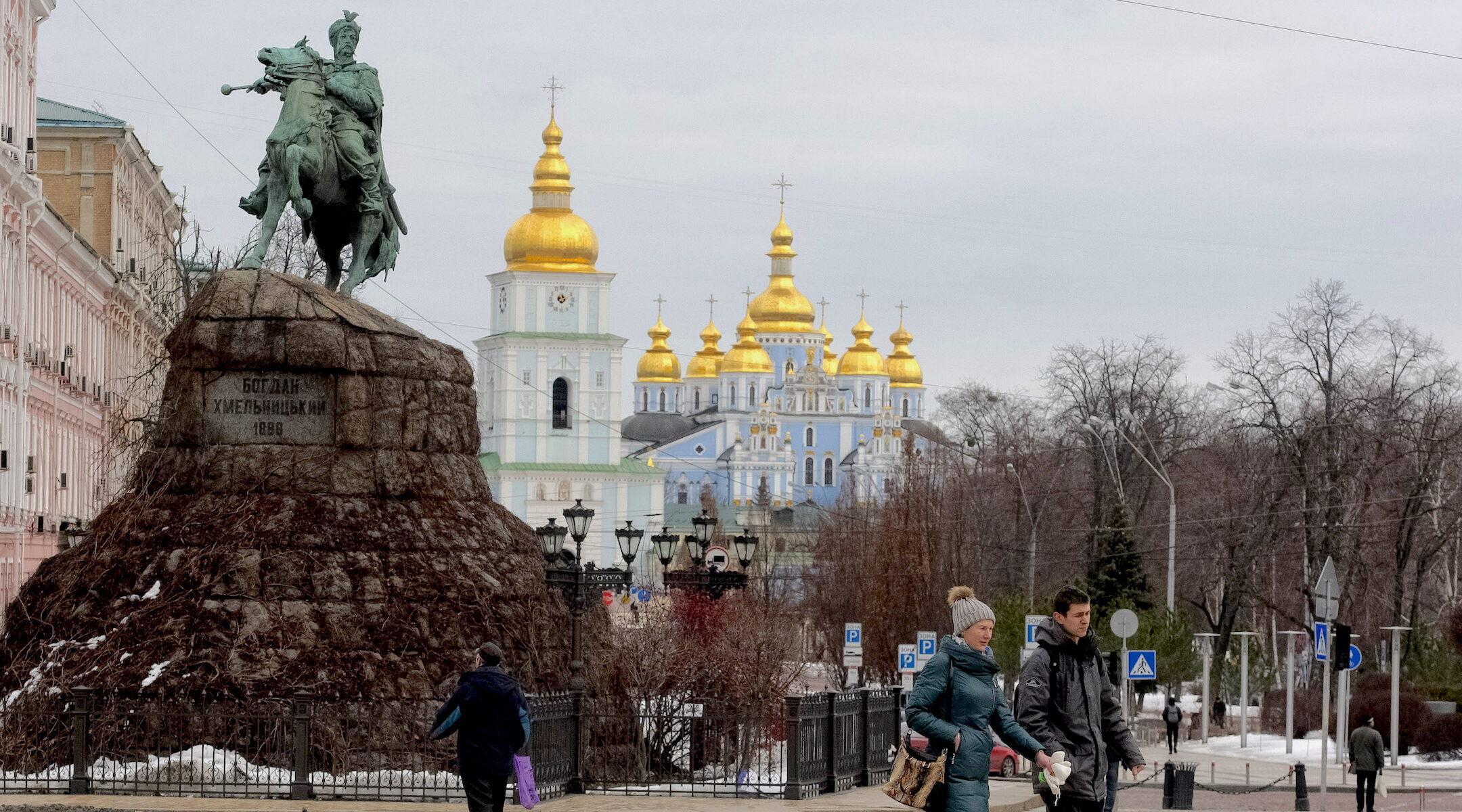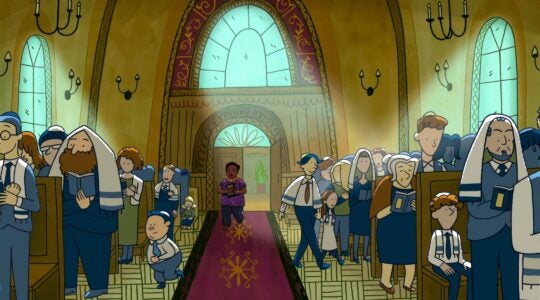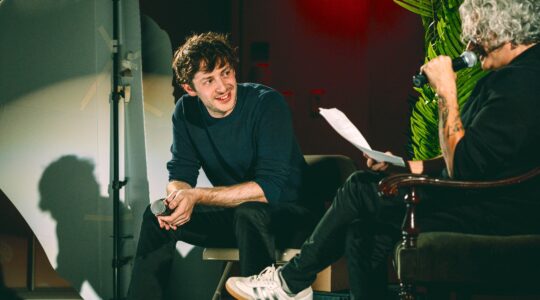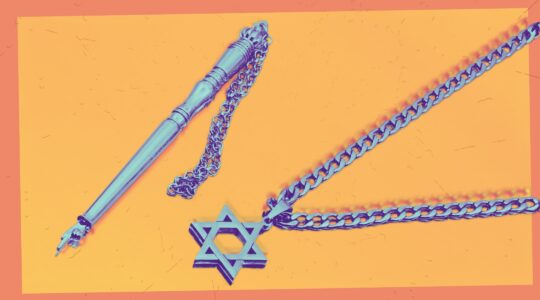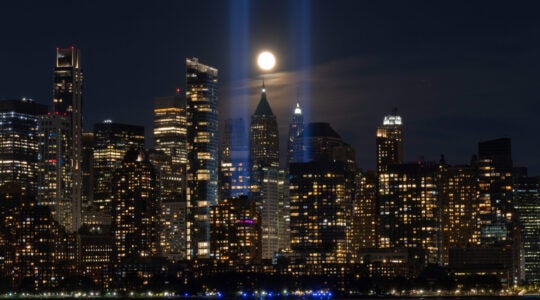(JTA) –The Russian invasion of Ukraine, justified by Vladimir Putin as necessary to “denazify” the country and stop “genocide,” outraged me for its blatant assault on a people, and on truth. But as I thought about his previous misuses of history, I should not have been so surprised.
In 2019, marking the 80th anniversary of the Nazi-Soviet Pact, Putin sought to downplay the significance of this agreement in starting World War II and its secret protocols that divided Poland between Hitler and Stalin — two other masters at re-writing history.
This invasion also brought back the overwhelming sense I had from various visits to Ukraine, best summarized in a familiar adage originally about the Balkans, that Ukraine has had more history than it can consume. As I traveled to big cities and small towns, aspects of its many layers of complicated history were on view everywhere.
In Kiev, I was greeted each morning outside my hotel by an enormous statue of Bohdan Khmelnytsky, the revered Cossack leader who commanded a 17th-century uprising to promote Ukrainian independence from Poland. He was also a vicious antisemite responsible for the killing of at least 40,000 Jews. I was appalled that the statue existed and wished that at the very least it might be accompanied by information about the innocent victims of this Ukrainian nationalist. Today, I find myself reflecting on this symbol of an independent Ukraine that also symbolizes its complex past.
As I would drive around the country, I would encounter common themes. You had the impression that one could stop in almost any town or village and ask, “Where were the Jews buried?” Someone would take you to a forest or a piece of land near a farmer’s field to see the mass grave. Over one and a half million Jewish men, women and children were murdered in Ukraine by the Nazis and their local collaborators. Unlike other European Jews, they were not deported to distant killing centers like Auschwitz but shot, one by one, in the places they had lived for centuries.
We now know so much more about “the Holocaust by bullets” because, ironically, of the fall of the Soviet Union and the opening of massive archives as well as the important work of Fr. Patrick Desbois, who identified many of the mass graves and interviewed locals who saw these horrible crimes. On one visit to Ukraine Fr. Desbois and I went to a wooded area, now a mass grave, where we met an elderly woman who shared her memories as a young girl witnessing the killing of her neighbors.
Another stark recollection is walking around towns and seeing on door after door an indentation that once held a mezuzah — the small case that traditionally marks the entrance to Jewish homes. The Jews were long gone, but the unintended marker of where a people had once lived remained, speaking to us across the decades.
I will also never forget that in practically every town and village one would see the same memorial: an angel, her head lowered, her face drenched in sorrow, holding a stalk of wheat in one arm and a dead baby in the other. No explanations required. One only needs the most superficial sense of Ukraine’s history to know the stature mourns Stalin’s deliberate starvation of at least 3.5 million Ukrainians, both Christians and Jews, in 1932-33, now known as the Holodomor.
In summer 2014 I visited in the aftermath of Putin’s annexation of Crimea and the Dignity Revolution that preceded it. The revolution had overthrown Ukraine’s Russian-backed president, Viktor Yanukovych. Makeshift memorials and anti-Russian sentiments were everywhere. I met government officials, public intellectuals, directors of archives, Holocaust scholars, Jewish community leaders and American diplomats. All of them saw this as a moment to write a new chapter in Ukrainian history. One described to me a burned-out bus with this declaration written in the ash: “One day spent fighting here is a life worth living.” The people I met were filled with similar defiance and resilience, although sometimes tinged by understandable anxiety or cynicism. But, overwhelmingly, the word I kept hearing everywhere was “hope.”
Ukraine has suffered from extraordinary external threats such as German Nazism and Soviet Communism and serious internal problems like extreme nationalism and antisemitism. But in recent decades it has begun to face its past, confront important truths, and create a pluralistic democracy. “Hope” hardly feels like the right word for this moment. But given a chance, the Ukrainian people have given us reason to believe that in the long term, freedom and dignity might prevail.
JTA has documented Jewish history in real-time for over a century. Keep our journalism strong by joining us in supporting independent, award-winning reporting.

